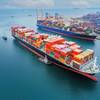Economic Impacts of STCW 2010
Our global economy and the maritime community have been greatly impacted by the implementation of the International Convention on Standards and Training, Certification and Watch keeping (STCW) 2010 Manila Amendments that went into force on January 1, 2012. Although it has been 18 years from the prior revision of the Convention and Code in 1995 and 35 years since they were adopted in 1978, the maritime industry was not fully prepared for the far reaching changes and implications to operations, training and technology. These amendments were promulgated to improve the global standards of mariner competence. The following is a summarization of the most important changes to the Convention and Code that were adopted by the Manila Amendments with a description of the effected parties and the level of economic impact (See Below). What was impacted immediately when the Manila Amendments went into effect on January 1, 2012 were the new minimum rest hours. This was done to synchronize the STCW requirements with the work hour requirements adopted by the International Labor Organization including the ILO Maritime Labor Convention (MLC). To prevent fatigue and ensure that mariners are fit for duty, all seafarers must have 10 hours rest in any 24-hour period with no exceptions, except during an emergency. Additionally a minimum amount of rest in any 7-day period is increased to 77 hours from 70 hours. The increase to 77 hours rest in a week has unfortunately increased the potential work hours to 91 and with an exception clause to 98 hours. This of course has an economic impact that is favorable to the shipowner and a potential added burden to the mariner. A prudent shipowner should disregard the maximum allowance and adhere to a normal schedule to avoid any potential fatigue issue and subsequent lawsuit if an incident arises.
Of paramount importance is that the rest hour limits now apply to most seafarers onboard, including masters and those who’s duties involve safety, prevention of pollution and security, not only watch keeper’s as had previously been the case. To top this all off mariners will need to review and sign a record of their work and rest hours periodically normally on a monthly basis to ensure they comply with the minimum rest hours stipulated. In reality this has had a moderate economic impact on shipowners, but from a risk management standpoint it is long overdue and increases the focus on having crew members that are well rested, prepared and alert. 2013 is a major transition year for all mariners as governments will continue to renew and revalidate pre January 1, 2012 certificates and endorsements as well as issue, recognize and endorse certificates for all mariners that commence training prior to July 1, 2013.
In the cross over period from the commencement of 2013 until July 1, 2013, all maritime education training facilities are in the process of finalizing and obtaining approval from their respective entities, in the U.S. it is the USCG for their new 2017 STCW curriculum. This includes a comprehensive review of all existing courses to take into account the new 2010 Manila Amendment requirements along with the generation of new courses. Modified or new syllabi have to be generated along with STCW Control Sheets that will provide a mechanism for instructors to evaluate students for the required competencies. Implementation of the new curriculum will commence this summer (2013) for the incoming class of 2017. This is having a substantial impact on the maritime training institutions and will require a dual set of courses be established and run until the existing classes of students (2014-2016) graduate.
All maritime training schools at this juncture in 2013 are well underway in finalizing details of the syllabi with new STCW Control Sheets as well as preparing detailed lesson plans prior to arrival of the class of 2017 freshman/plebes.
What has happened for students graduating in the middle group of years from 2014-2016 is that they will be required to complete the delta difference from the old 1995 Amendments to the new 2010 Amendments. Most training institutions have identified that difference and titled it Gap Training for Deck and Engine with associated courses, syllabi and STCW Control Sheets. That way when the students complete the gap training and pass their respective USCG Merchant Marine license exam their new license will truly be good for five years and not only to 2017. On January 1, 2014 another mandatory requirement comes into effect and it is for security training. Maritime piracy has become a main issue of concern world wide in the last 10 years. Piracy has impacted the global economy in the cost range of $10 billion dollars a year. How this will be addressed through the Manila Amendments is via new mandatory security training that encompasses three specific areas: security familiarization training, security awareness training and designated specific security duties.
The USCG issued a Policy Letter on October 11, 2012 concerning Vessel Personnel with Designated Security Duties (VPDSD). This new STCW rating is above Maritime Security Awareness (MSA) but below Vessel Security Officer (VSO). It would be desirable for maritime school graduates to have obtained this training, however it is not currently required for initial issuance of a Merchant Mariner Credential (MMC) with a license endorsement. Most maritime schools will be looking into how to incorporate this training in the curriculum as it is highly desirable and probably will be an additional requirement in the near future.
The new Manila Amendments have addressed mandatory minimum requirements for all mariners to obtain instruction, basic training and familiarization in safety. All basic training courses will require refresher training after five years. Similar to what is now required by the USCG for merchant marine license renewal. Courses that will be subject to this provision include: Advanced Firefighting (AFF), Basic Safety Training (BST), Medical Training, Fast Rescue Boat (FRB) and Survival Craft and Rescue Boats. One other significant impact of the 2010 Manila Amendments has been the mandatory carriage of ECDIS equipment aboard vessels per the following phase in period: already phased in on July 1, 2012 were for new passenger vessels above 500 GT and new tankers above 3000 GT, on July 1, 2013 it will be for all new cargo ships above 10,000 GT and on July 1, 2014 it will be for all new cargo ships above 3,000 GT.
These requirements will have an economic impact as all existing licensed deck officers that will serve on these vessels will be required to have an ECDIS familiarization training certificate. This will be an added cost burden on shipping companies but a boon to the training facilities. ECDIS has shown to increase the situational awareness of mariners when properly setup and used. Unfortunately it has been shown that their have been many instances due to improper settings and use that have led to maritime allusions that have been attributed to insufficient training. One potential solution might be if the IMO and other authorities continue to push for standardization of ECDIS design, layout and features. This will allow all mariners trained in ECDIS to be able to move from one vessel to another and operate another brand of ECDIS without a steep learning curve.
In summary STCW as one of the cornerstones of the maritime compliance and regulatory fields along with the International Convention for the Safety of Life at Sea (SOLAS) and International Convention for the Prevention of Pollution from Ships- Marine Pollution/(MARPOL) has proven to be an instrumental factor in setting the minimum competency and training standards for the maritime industry. Worldwide economic impact from a cost perspective has been substantial and will increase as more stringent rules and regulations come into force in the near future including new Emission Control Areas (ECA’s) that will spur on power plant improvements or shifts to alternative fuels including LNG. Continual improvements in electronics, propulsion, technology and computing power have made it apparent that minimum standards in equipment and training need to be continuously re-evaluated with new levels and standards set as improvements are made. From a financial standpoint this has created a capital and resource impact on the maritime community that is weeding out shipping companies that are not cash rich or leveraged to obtain new sources of funding. Those companies that are prospering are the ones that have strategically planned for the long term and have been able to evolve and change to meet the new requirements thrust on them.
For with stagnation comes extinction.
(As published in the June 2013 edition of Maritime Reporter & Engineering News - www.marinelink.com)











